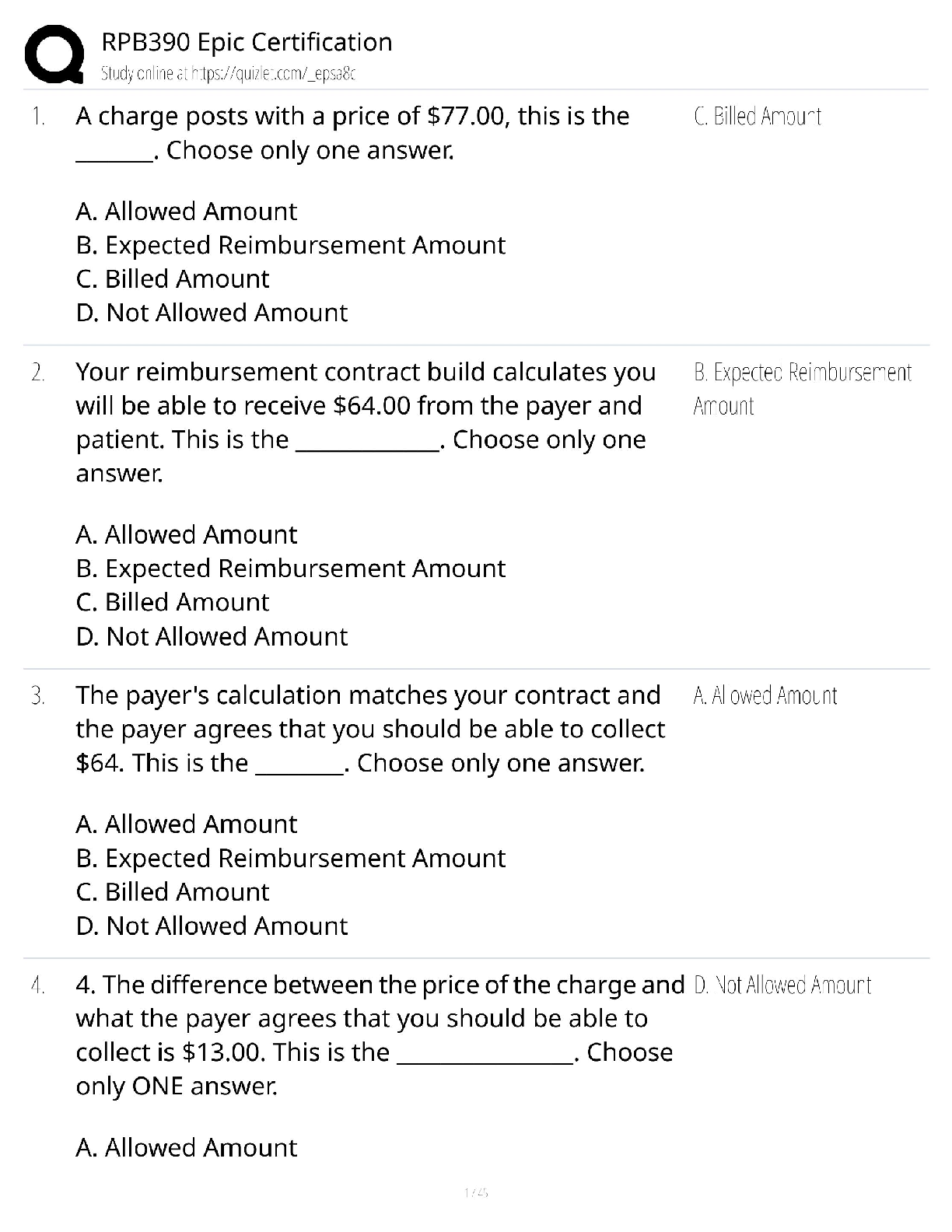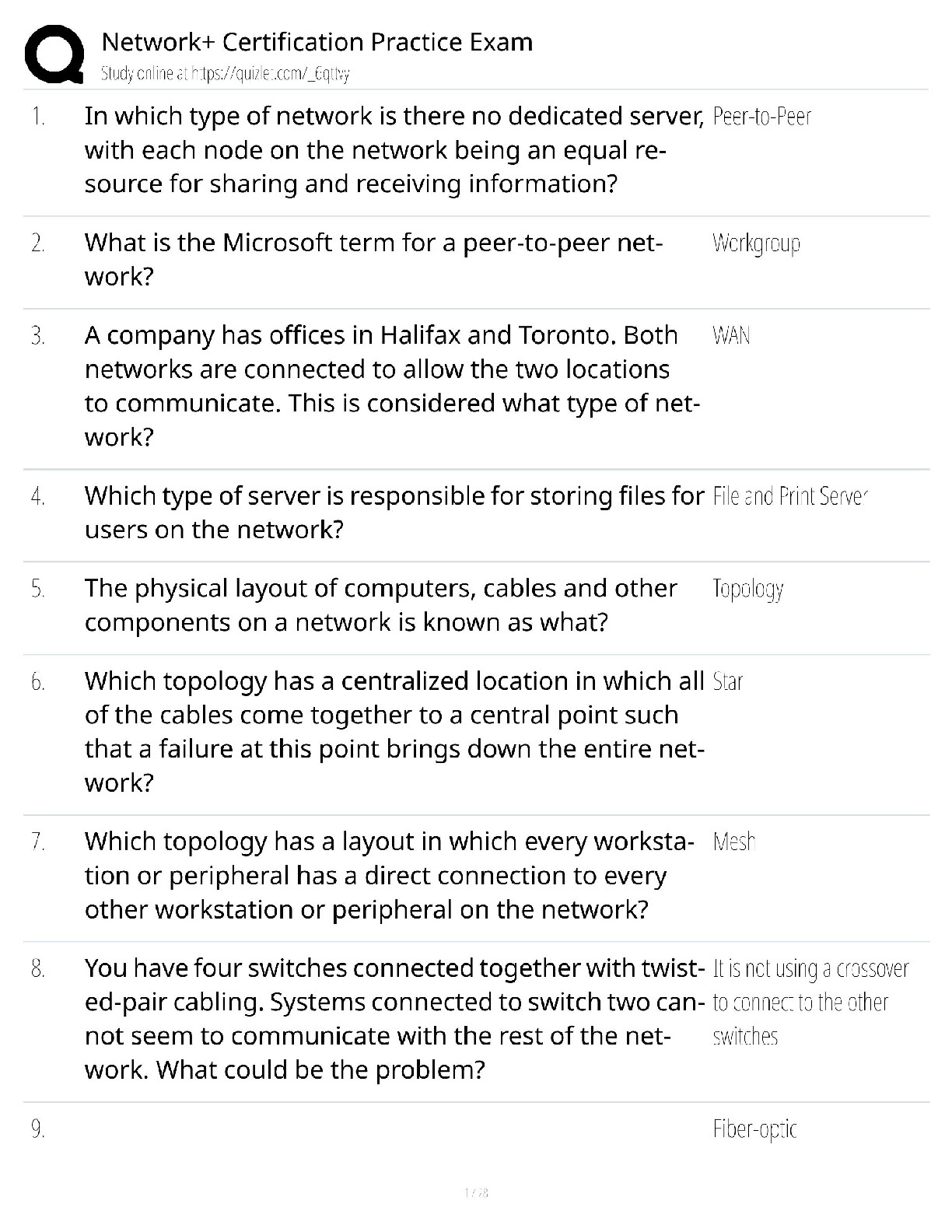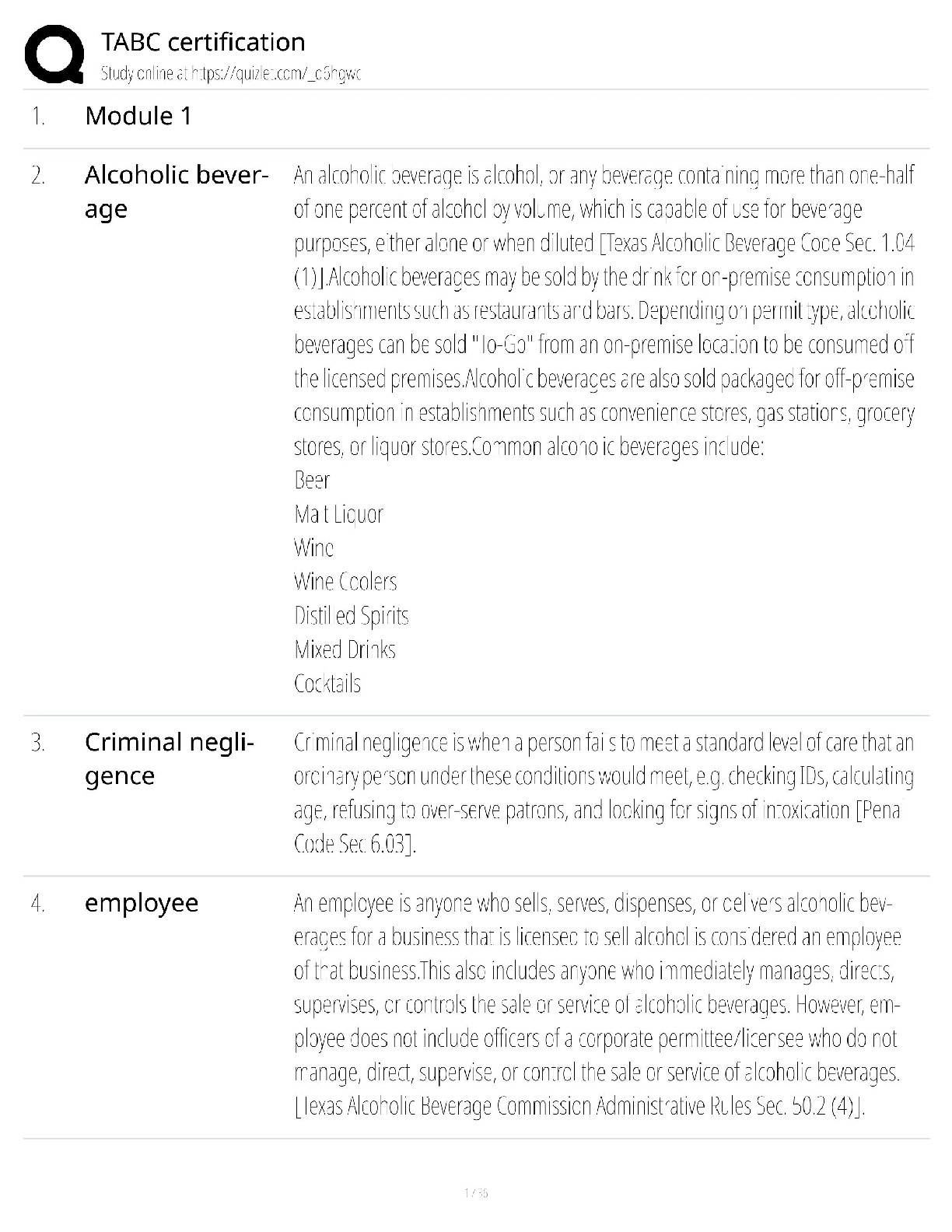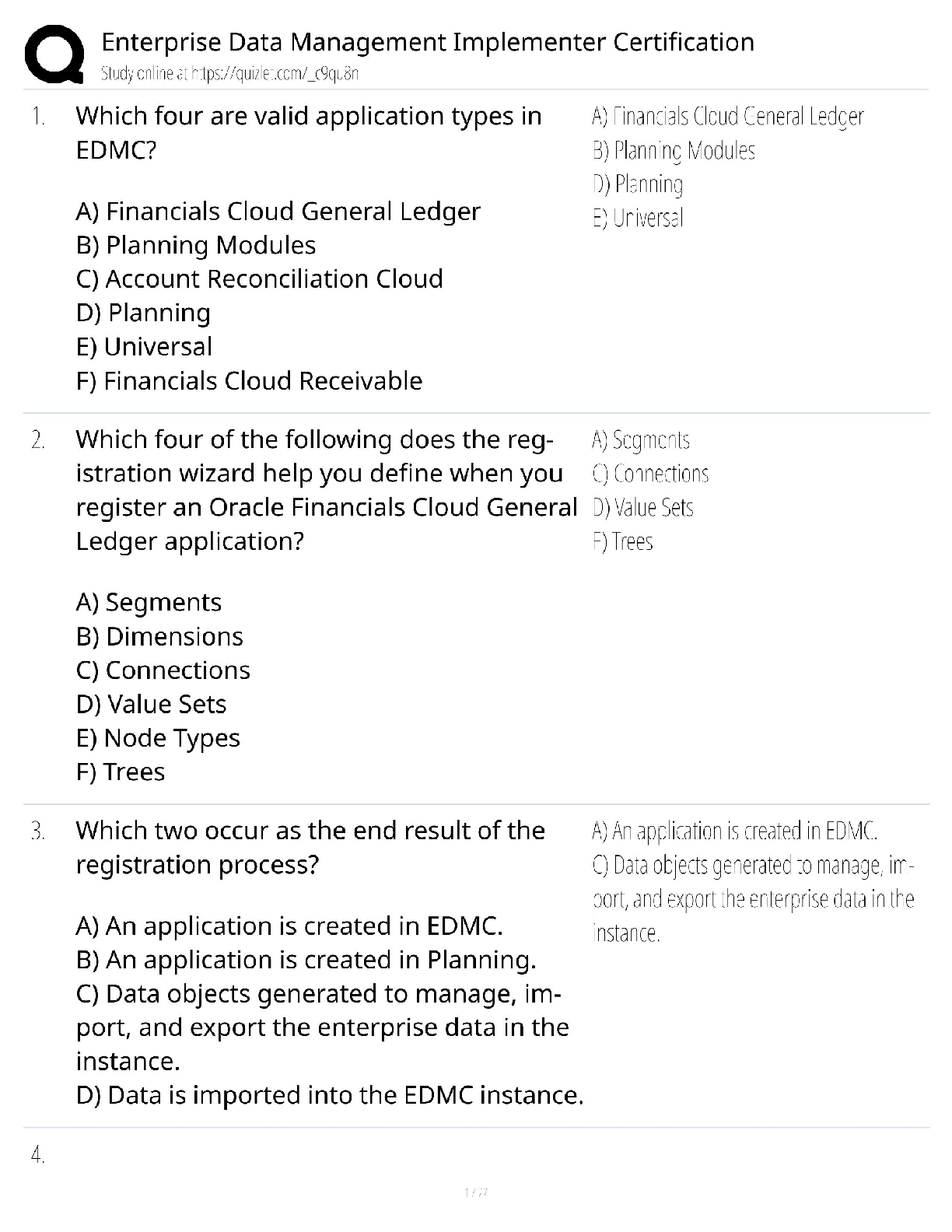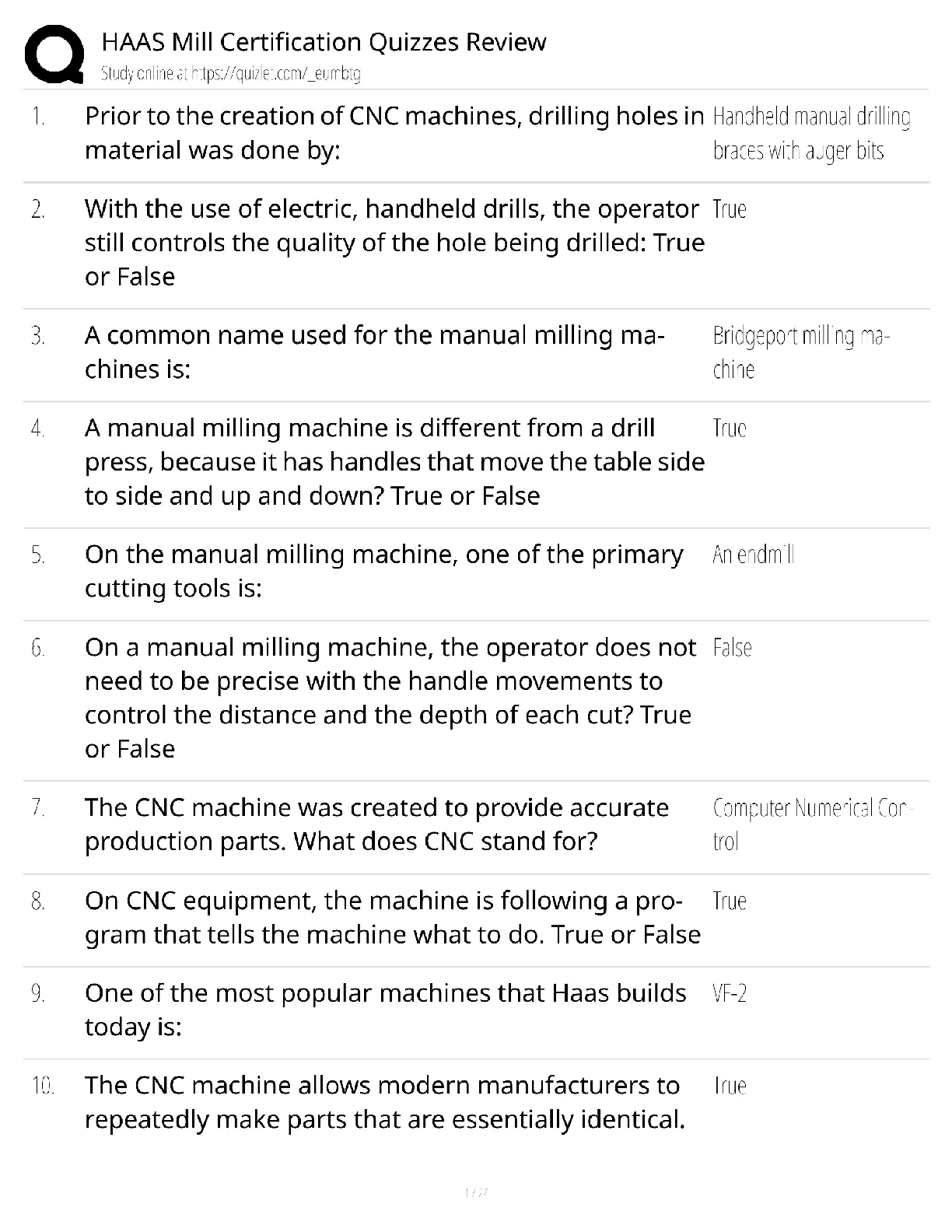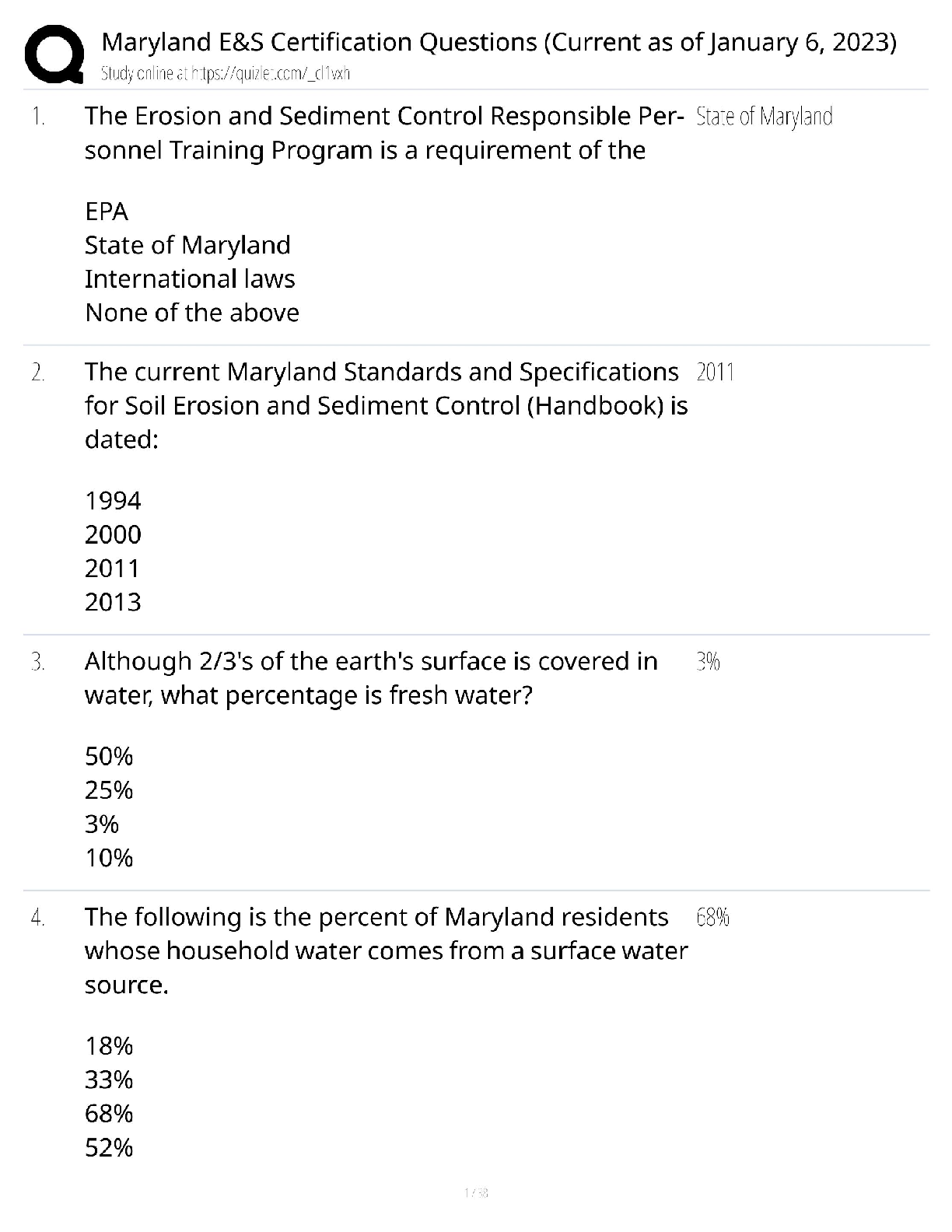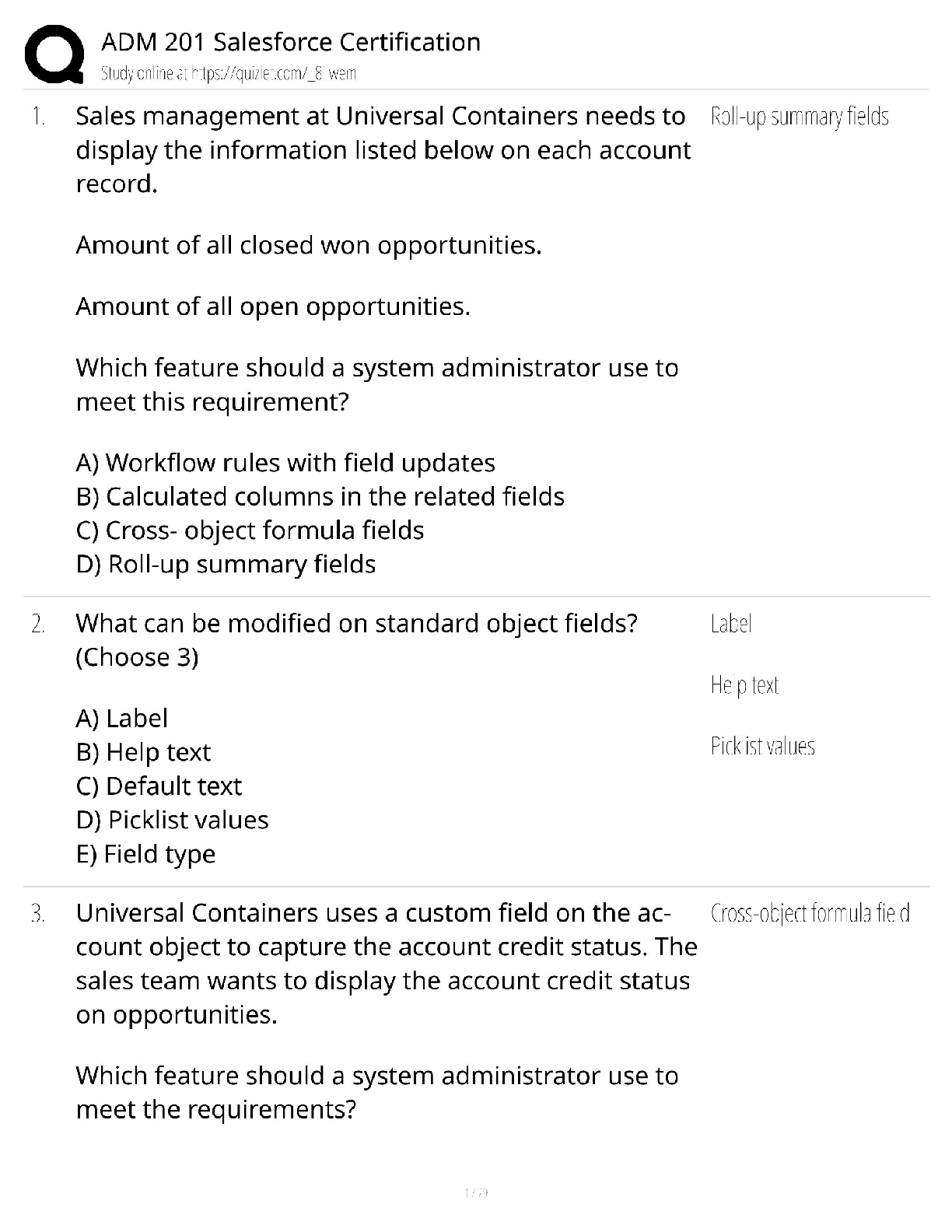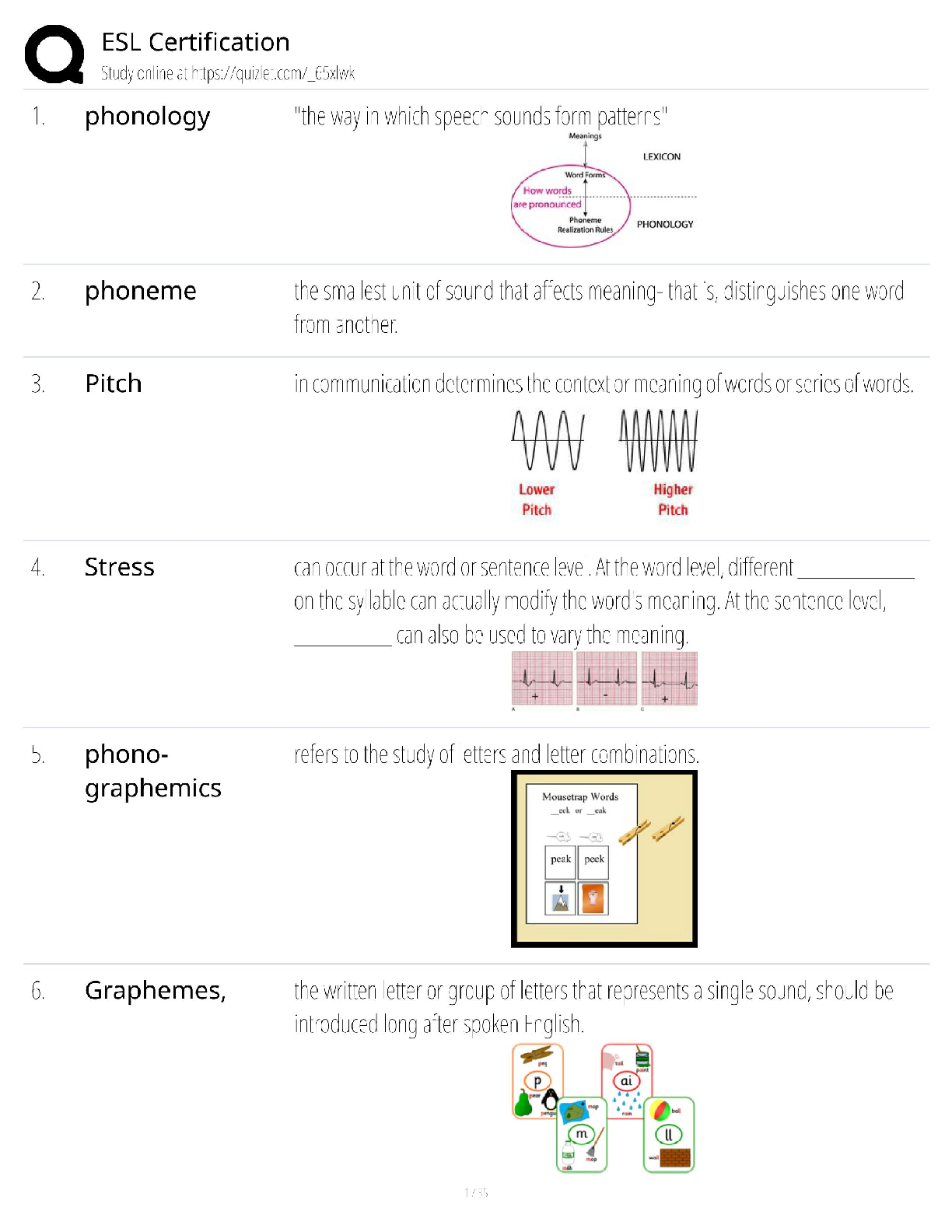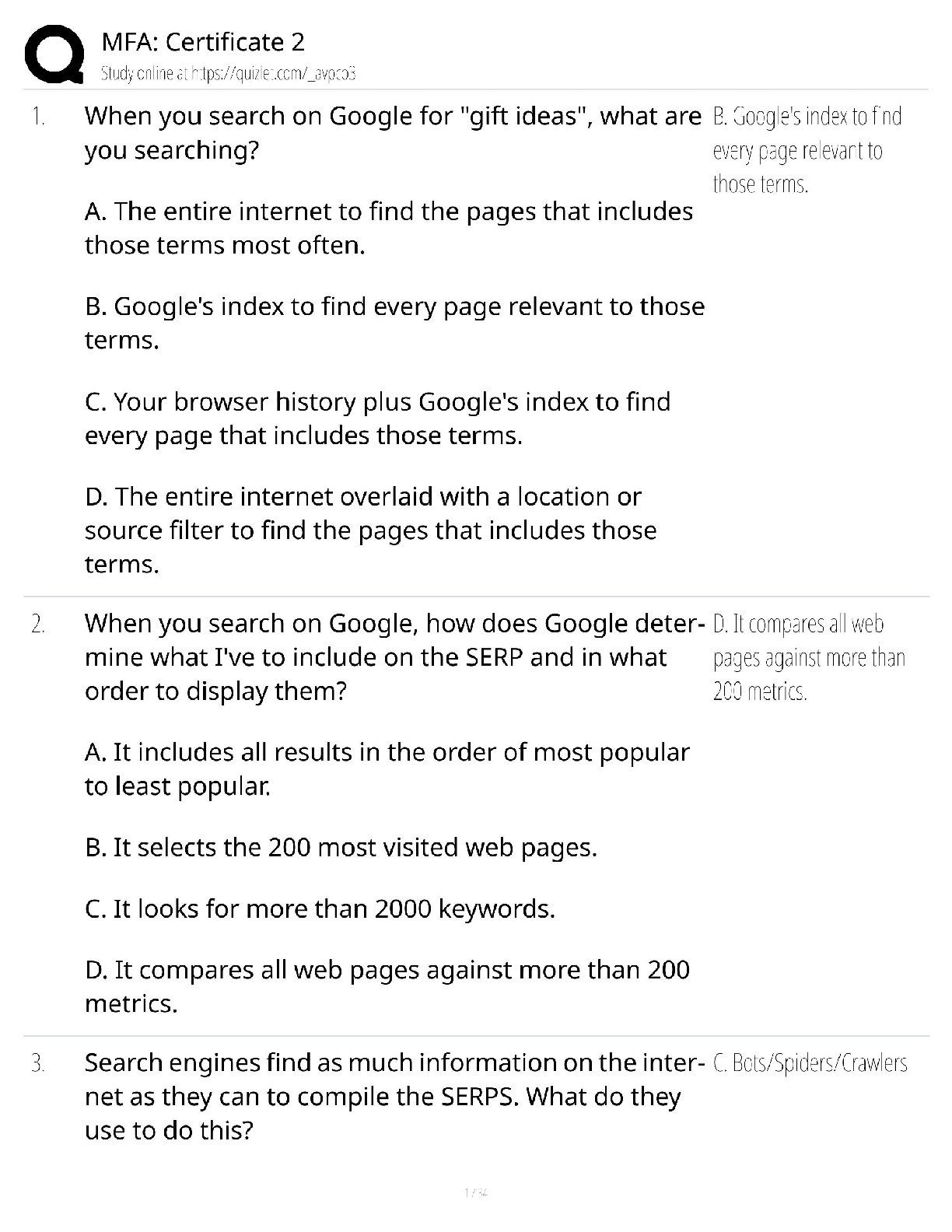Economics > QUESTIONS & ANSWERS > WGU C213 Final Exam Questions and Answers Already Passed (All)
WGU C213 Final Exam Questions and Answers Already Passed
Document Content and Description Below
WGU C213 Final Exam Questions and Answers Already Passed Order of assets listed on the balance sheet ✔✔Assets are listed in the order of liquidity. Liquidity is the amount of time it would usua ... lly take to covert an asset into cash. Obviously, cash would be listed first, followed by marketable investments (a company can quickly convert a short-term investment into cash). Accounts receivable would be listed next followed by inventory, and longterm investments, fixed assets, and intangibles. Current assets are listed before long-term assets. Current liabilities are listed before long-term liabilities, but there is no specific order they are listed in outside of current and long-term. There is also no specific order equity accounts are listed on the balance sheet; although, typically you will see paid-in-capital followed by retained earnings followed by accumulated other comprehensive income, and lastly, treasury stock. Difference between a manufacturing company and a service company. Period Costs Product Costs Service Co. Selling Costs Direct Labor Administrative Costs Service Overhead Manufacturing Co Selling Costs Direct Labor Administrative Costs Manufacturing Overhead Direct Materials (inventory ✔✔The only difference is - a manufacturing company has direct materials (inventory). Evaluating a historical income statement to project a future income statement. Projected growth for 2017 = 10% increase over 2016 sales. Step 1: Convert the income statement into a common-sized income statement. Step 2: Multiply 2016 sales by 1.10 (10% growth) to get the forecasted 2017 sales. Then multiply the projected 2017 sales by the percentages from step 1. Now, what would you do if you were given the 2017 sales figure and you need to calculate the 2016 sales figure based off the 10% growth for 2017? ✔✔Calculation for 2016: 110,000 / 1.10 = 100,000 Role of the U. S. Securities and Exchange Commission (SEC) in financial reporting. ✔✔Regulates the U.S. Stock exchanges. Seeks to create a fair information environment in which investors can buy and sell stocks. Congress created the first securities act in 1933 and the second securities act in 1934 in response to the stock market crash of 1929. The Securities Act of 1933 requires most companies planning to issue new debt or stock securities to the public to submit a registration statement to the public for approval. The Securities Act of 1934 requires a public company to file detailed periodic reports including audited financial statements (form 10-K is the annual report; Form 10-Q is the quarterly report). Granted the legal authority to establish accounting standards. Currently the SEC accepts the pronouncements set by FASB. The SEC can suspend trading of a company's stock, and if hearings show that the issue failed to comply with the securities laws, the SEC can de-list the security. Congress strengthened the SEC through the enactment of Sarbanes-Oxley (SOX), which was enacted after the massive frauds that occurred in the late 1990s and the early 2000s. Compare and Contrast Traditional Costing to Activity-Based Costing (ABC). ✔✔ABC is a more accurate product costing system than traditional product costing systems. ABC requires more time and expense to administer than do traditional costing systems. Companies with diverse products involving substantially different production processes, an ABC system yields better cost data and better management decisions. Describe how basic cost behavior patterns change as sales volumes change. ✔✔Fixed costs (FC) are fixed in total, but as sales volume increases, the per unit FC decreases. Variable costs (VC) are fixed per unit, but as sales volume increases, total VC increases. Stewart Manufacturing produces and sells die cast race cars. VC for each die cast car is $3 and total FC are $300,000 Per Unit Variable costs remains the same Total Fixed Costs remains the same Per Unit Fixed Costs decrease Analyze a statement of cash flows to identify operating, investing, and financing activities. Operating Activities: ✔✔All categories that are on the income statement, and all current assets and liabilities. i.e. sales (cash received from customers); cost of goods sold (cash paid for inventory); operating expenses (cash paid for rent); Analyze a statement of cash flows to identify operating, investing, and financing activities. Investing Activities: ✔✔Balance sheet accounts: Long-term assets. i.e. property, plant, and equipment; investments i.e. cash paid for equipment, cash paid for investments (stock, loans) Analyze a statement of cash flows to identify operating, investing, and financing activities. Financing Activities: ✔✔Balance sheet accounts i.e. Long-term liabilities and equity accounts i.e. mortgage payable; common stock and additional-paid-in capital (cash received from stockholders); retained earnings (cash paid for dividends) Explain Accrual Accounting Revenue recognition: ✔✔In order for revenue to be recognized in an accrual system, two criterial must be met: The promised work must be done before the revenue is recognized. Cash collection must be reasonable assured before revenue is recognized. Explain Accrual Accounting Expense recognition: ✔✔Expenses are matched to the revenue that is generated from the expense. Direct matching, as with cost of goods sold (COGS) However, some expenses are extremely difficult to match with specific revenue, and are more aligned to a specific time period. Systematic allocation, as with deprecation Moreover, some expenses are difficult to match with specific revenue or specific time periods. Immediate recognition, as with advertising Variable Costs: ✔✔A cost that changes directly with changes in the level of sales or production. [Show More]
Last updated: 3 years ago
Preview 1 out of 18 pages
.png)
Buy this document to get the full access instantly
Instant Download Access after purchase
Buy NowInstant download
We Accept:

Also available in bundle (1)
Click Below to Access Bundle(s)
.png)
WGU C213 BUNDLED EXAM QUESTIONS AND ANSWERS ALREADY PASSED
WGU C213 BUNDLED EXAM QUESTIONS AND ANSWERS ALREADY PASSED
By Nutmegs 3 years ago
$20
10
Reviews( 0 )
$10.00
Can't find what you want? Try our AI powered Search
Document information
Connected school, study & course
About the document
Uploaded On
Sep 03, 2022
Number of pages
18
Written in
All
Additional information
This document has been written for:
Uploaded
Sep 03, 2022
Downloads
2
Views
369





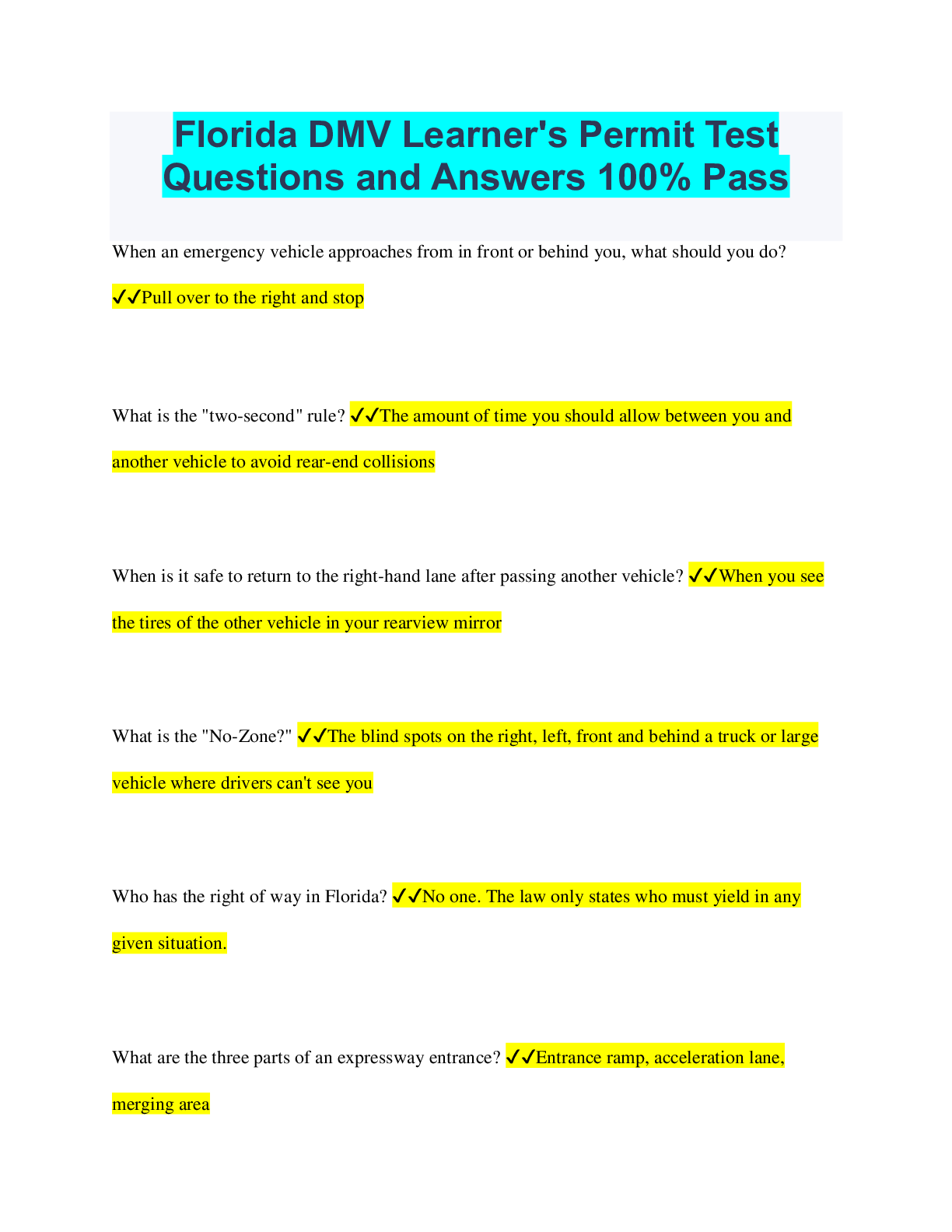
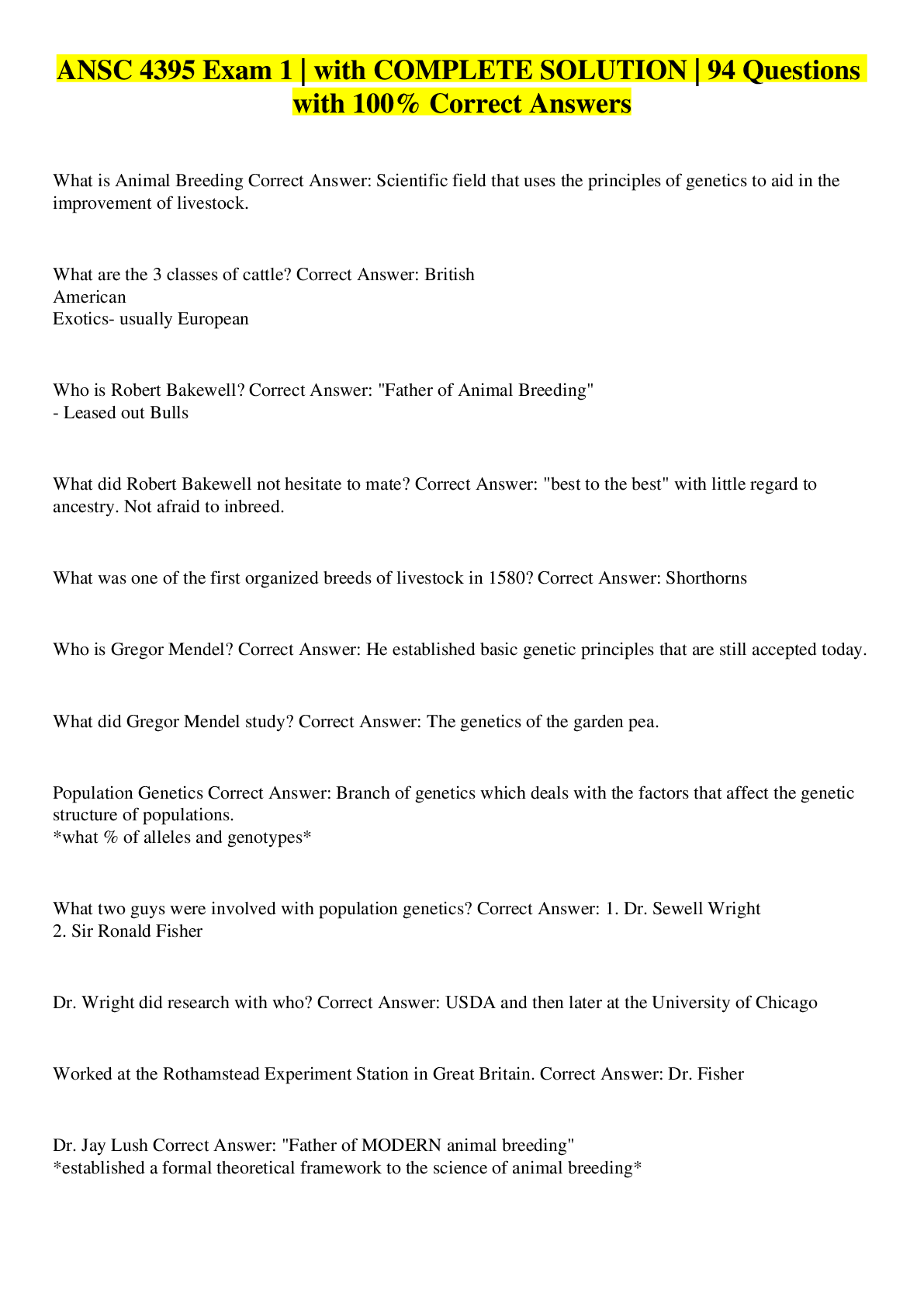

.png)





